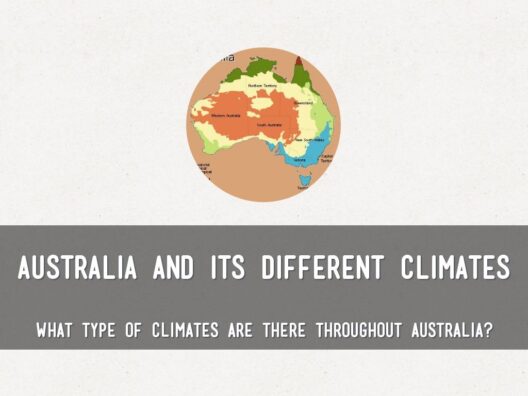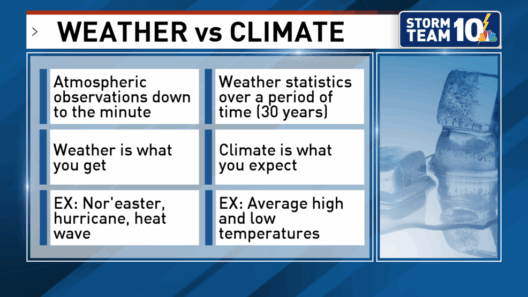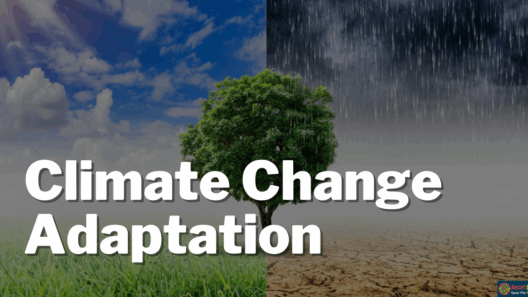Altitude profoundly influences climate and weather patterns, leading to diverse environmental conditions across various regions. This compelling relationship between height and atmosphere facilitates unique ecosystems and inflicts distinct climatic phenomena. As one ascends into the atmosphere, temperature, pressure, and humidity undergo significant transformations, culminating in a kaleidoscope of climatic zones. Understanding these intricated patterns is essential for evaluating ecological systems and mitigating climate change impacts.
The determinants of temperature at varying altitudes are intricate. One of the most salient observations is that temperature typically decreases with elevation. This phenomenon, known as the lapse rate, is underscored by the fundamental principles of atmospheric science. As elevation increases, the air pressure diminishes, leading to a decrease in temperature— approximately 6.5 degrees Celsius for each kilometer up. This decline is prominent in mountainous regions, where snow-capped peaks contrast starkly against lush valleys below. These temperature gradients not only shape the flora and fauna of these areas but also dictate agricultural practices, water cycles, and even human settlement patterns.
The interplay of altitude and precipitation is equally noteworthy. Elevation profoundly skews precipitation patterns, facilitating the formation of rainforests, deserts, or alpine tundras within small geographical ranges. Orographic lift serves as a principal mechanism for this effect; as moist air ascends a mountain range, it cools and condenses, precipitating moisture on the windward side. This creates lush ecosystems bolstered by abundant rainfall. Conversely, the leeward side, often referred to as the rain shadow, experiences significantly reduced precipitation, leading to arid or semi-arid conditions. Such stark contrasts illuminate how mere elevation differences can spawn entirely dissimilar climates within close proximity.
Furthermore, elevation impacts atmospheric compositions and the occurrence of phenomena such as wind patterns. Higher altitudes often harbor specific weather systems, particularly due to the thinning layer of atmosphere that inhibits warmth retention. For instance, the phenomenon of temperature inversion occurs when a layer of warmer air traps cooler air beneath it, often leading to the formation of fog or smog in valleys. This juxtaposition has profound implications for air quality and pollution dispersion. Additionally, mountain ranges act as barriers to prevailing winds, distorting typical wind patterns and resulting in unique weather conditions. These variances demand adaptability from the species inhabiting these areas, illustrating the symbiotic resilience of nature.
The biotic implications of altitude-induced climate variation extend to ecosystem dynamics and species distribution. Vertical zonation is a key concept highlighting how species adapt to altitude-related climatic occurrences. As one ascends into the mountains, the types of vegetation and animal life shift dramatically, reflecting the physiological adaptations necessitated by changing environmental conditions. For example, the transition from temperate forests at lower elevations to alpine meadows and ultimately to tundra at the peaks showcases the specialized adaptations of flora and fauna. This biodiversity is critical for ecological balance, yet it remains vulnerable to climactic disruptions, particularly those fueled by anthropogenic influences.
Climate change further complicates the equation, accentuating the susceptibility of mountainous regions to rapid transformations. Higher altitudes often serve as early indicators of climatic shifts due to more pronounced sensitivity to temperature fluctuations and shifting precipitation patterns. Melting glaciers and reduced snowpacks are emerging phenomena, eliciting concern for global sea-level rise and fresh water availability. As these ecosystems undergo stress, the cascade of ecological ramifications threatens not only the indigenous species but also the human communities that rely on these natural resources.
Considering the interconnectedness of altitude, climate, and human activity, key adaptation strategies become paramount. Compounding resilience in mountainous ecosystems involves promoting sustainable land use practices and enhancing conservation efforts, thereby preserving biodiversity amidst shifting climatic patterns. The prioritization of ecological preservation dovetails with mitigating climate impacts, underscoring the urgency for a holistic approach in environmental stewardship.
Moreover, harnessing the potential of climate education can empower communities residing in these vulnerable topographies. Awareness initiatives aimed at local populations regarding the implications of elevation-related climatic changes can foster engagement in preservation efforts. Recognizing their unique ecological makeup enables residents to become custodians of their environment, playing a vital role in combating climate change.
In summation, altitude wields formidable influence over climate and weather, birthing a mosaic of ecological niches characterized by distinct conditions. The descending temperature gradients, altered precipitation patterns, and unique atmospheric compositions compel a diverse array of biological adaptations. We must acknowledge the transformative intersectionality of these phenomena and the urgency for effective climate action to safeguard both ecological integrity and human livelihoods. To understand how the elevation alters the very fabric of our environment is not merely an academic exercise; it is a clarion call to recognize our role in preserving the vitality of our planet for generations to come.








